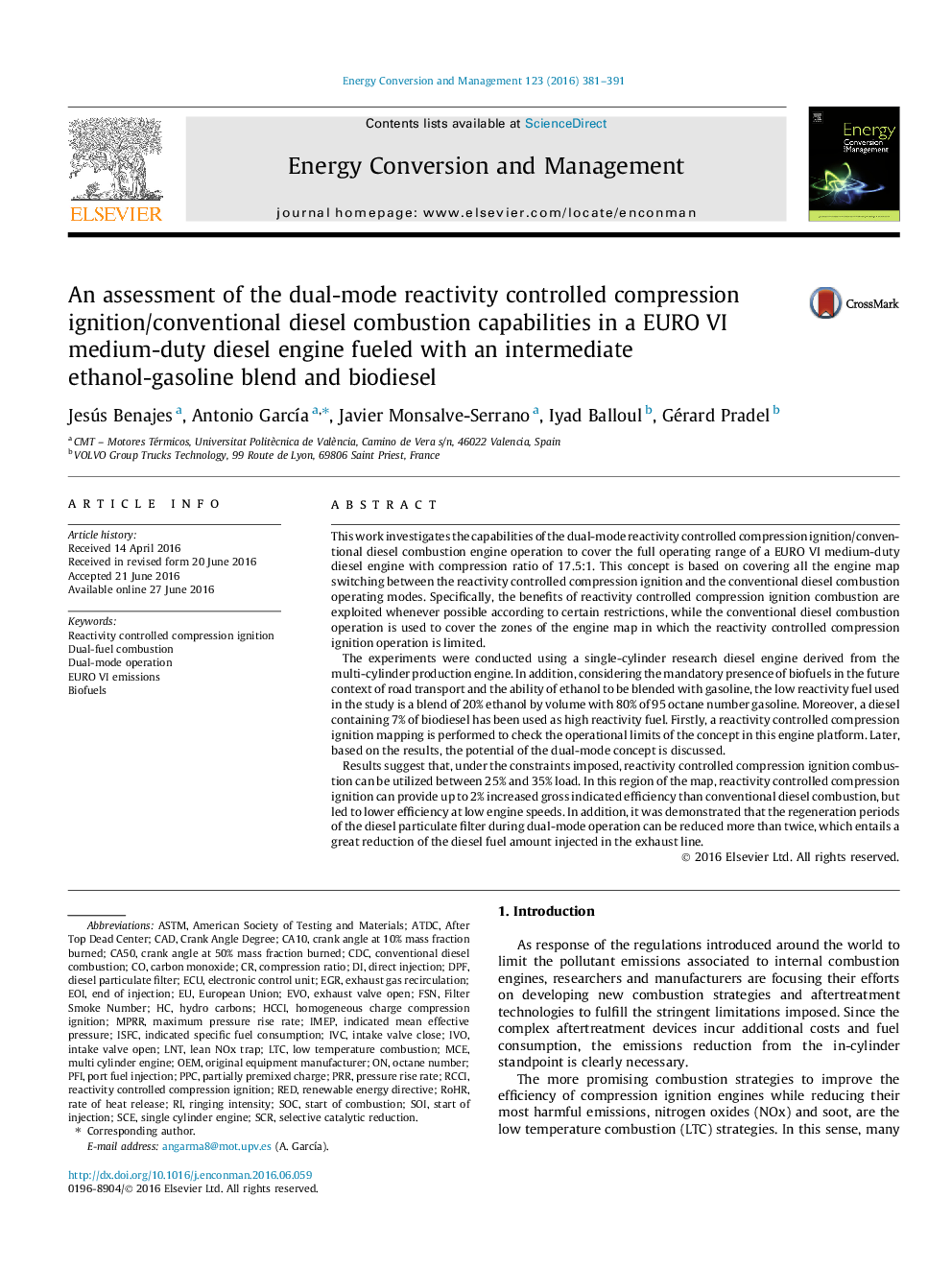| کد مقاله | کد نشریه | سال انتشار | مقاله انگلیسی | نسخه تمام متن |
|---|---|---|---|---|
| 760161 | 1462839 | 2016 | 11 صفحه PDF | دانلود رایگان |

• Reactivity controlled compression ignition regime utilized from 25% to 35% load.
• Dual-mode reduces the regeneration periods of the diesel particulate filter.
• The use of near-term available biofuels allows good performance and emissions.
• Dual-mode leads to 2% greater efficiency than diesel combustion at high engine speeds.
This work investigates the capabilities of the dual-mode reactivity controlled compression ignition/conventional diesel combustion engine operation to cover the full operating range of a EURO VI medium-duty diesel engine with compression ratio of 17.5:1. This concept is based on covering all the engine map switching between the reactivity controlled compression ignition and the conventional diesel combustion operating modes. Specifically, the benefits of reactivity controlled compression ignition combustion are exploited whenever possible according to certain restrictions, while the conventional diesel combustion operation is used to cover the zones of the engine map in which the reactivity controlled compression ignition operation is limited.The experiments were conducted using a single-cylinder research diesel engine derived from the multi-cylinder production engine. In addition, considering the mandatory presence of biofuels in the future context of road transport and the ability of ethanol to be blended with gasoline, the low reactivity fuel used in the study is a blend of 20% ethanol by volume with 80% of 95 octane number gasoline. Moreover, a diesel containing 7% of biodiesel has been used as high reactivity fuel. Firstly, a reactivity controlled compression ignition mapping is performed to check the operational limits of the concept in this engine platform. Later, based on the results, the potential of the dual-mode concept is discussed.Results suggest that, under the constraints imposed, reactivity controlled compression ignition combustion can be utilized between 25% and 35% load. In this region of the map, reactivity controlled compression ignition can provide up to 2% increased gross indicated efficiency than conventional diesel combustion, but led to lower efficiency at low engine speeds. In addition, it was demonstrated that the regeneration periods of the diesel particulate filter during dual-mode operation can be reduced more than twice, which entails a great reduction of the diesel fuel amount injected in the exhaust line.
Journal: Energy Conversion and Management - Volume 123, 1 September 2016, Pages 381–391